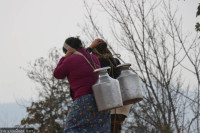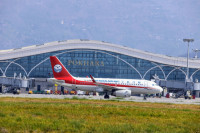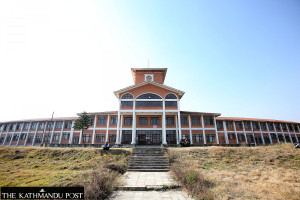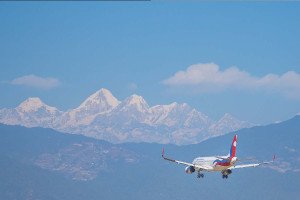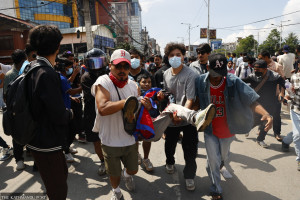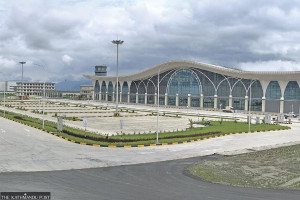Editorial
Mind the mines
Lax enforcement of guidelines has emboldened industries to continue with problematic practices.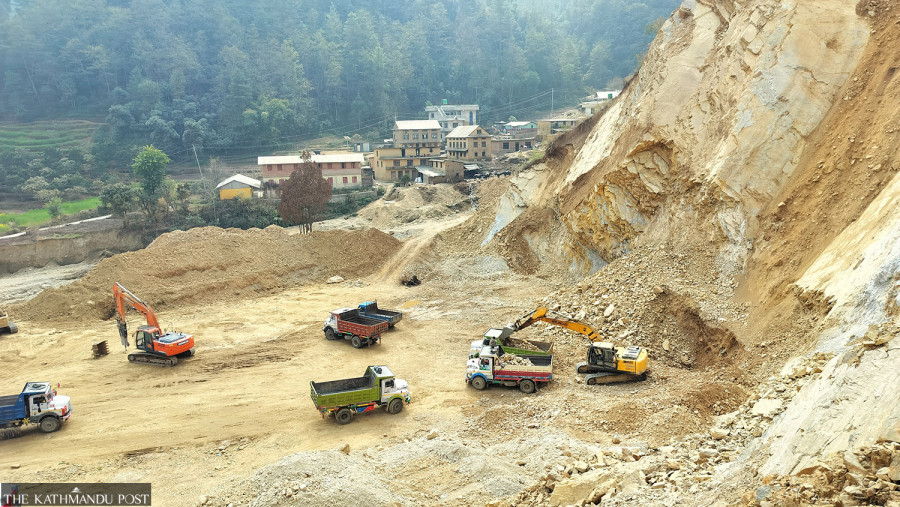
Last year’s monsoon was devastating for Kavrepalanchok district’s Bethanchok Rural Municipality. Out of 78 people who died in floods and landslides in the district, 12 deaths were reported from Bethanchok alone. Due to the paucity of resources and aid, survivors are still forced to live in their crumbling homes; those whose houses were entirely swept away by the swollen Roshi River and landslides have not been able to rebuild. Meanwhile, quarrying mines—believed to be the primary cause of the devastation in the district—have already started operating. Given this, residents are now living with an impending double whammy of natural and human-induced disasters.
Bethanchok has three registered quarries and one crusher. But mining operators often disregard standard excavation practices. Earlier this month, there was a dry landslide at the Ganeshsthan Mineral Plant site in the rural municipality due to improper excavation. According to locals, the operators crushed the hillsides from below rather than from top to down, disregarding standard excavation practices. Though the landslide didn’t result in any human loss or property damage, the plant site is right next to a school, a health post, a ward office and houses, putting the entire community in danger. Moreover, the dust and debris from the mine still feed into the river, increasing the risk of flood even this year.
Bethanchok is just an example. Unregulated quarrying and dangerous excavation are headaches for many settlements across the country. Just last year, in the Kalakhola area of Baglung Municipality-13, unregulated mining at the Kaligandaki river left an entire under-construction industrial village and nearby settlements at risk. Nepal’s legal standards mandate that crusher plants and quarries be at least 500 metres away from rivers, roads and bridges, and two kilometres from schools, hospitals, religious and cultural sites and densely populated areas.
However, lax enforcement of mining guidelines has only emboldened these industries. Even the efforts of local people and representatives to control and enforce compliance, like issuing written instructions and demanding adherence to national guidelines, have fallen short. As seen in Bethanchok, mine operators often go for cut-from-below approaches, which are cheaper and require fewer people. Such unethical mining practices warrant stringent punishment for violators and cross-examination in mines across the country. Unfortunately, most of these industries, which political leaders and local representatives own, have political backing and often escape punishment.
There is a lack of intervention from all levels of government. The federal government can (and should) shut down mining and quarrying industries in settlements and areas officially declared as high-risk zones. As vital is curtailing the operations of those working without proper environmental or geographical assessments. To prevent future devastation from the crusher industries, the country’s disaster management body, the National Disaster Risk Reduction and Management Authority, can also play a pivotal role in coordination with local officials. If it deploys experts to monitor how quarrying practices have put communities at risk and how rivers have changed their course over time due to the flow of debris and dust, many risks can be mitigated.
Uncontrolled anthropogenic activities have triggered many disasters and environmental damage in the country in recent years. Without urgent actions, this monsoon could deepen the woes of people who have already been traumatised by previous monsoons. Authorities and mine operators must ensure that mining activities never come at the cost of the environment or precious lives.




 16.12°C Kathmandu
16.12°C Kathmandu

